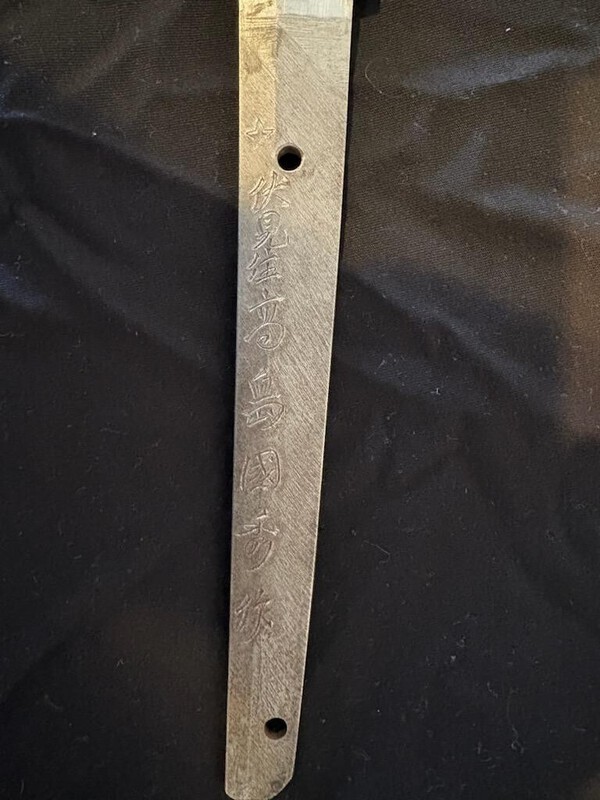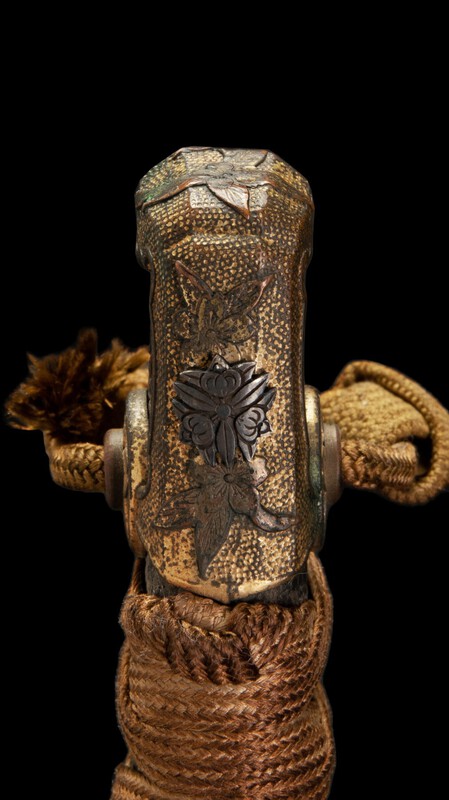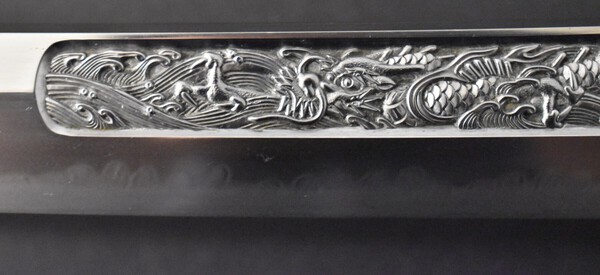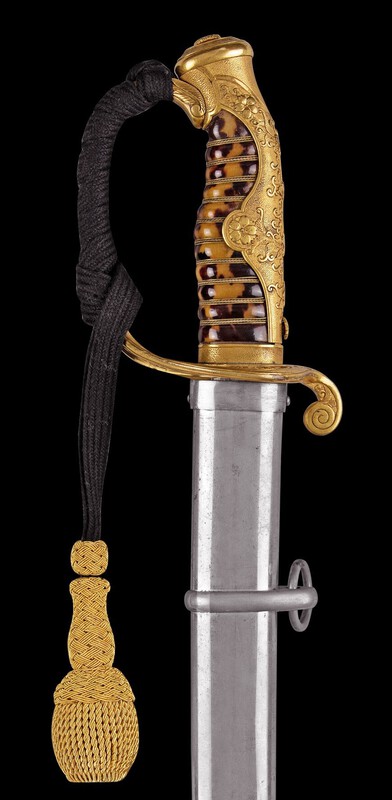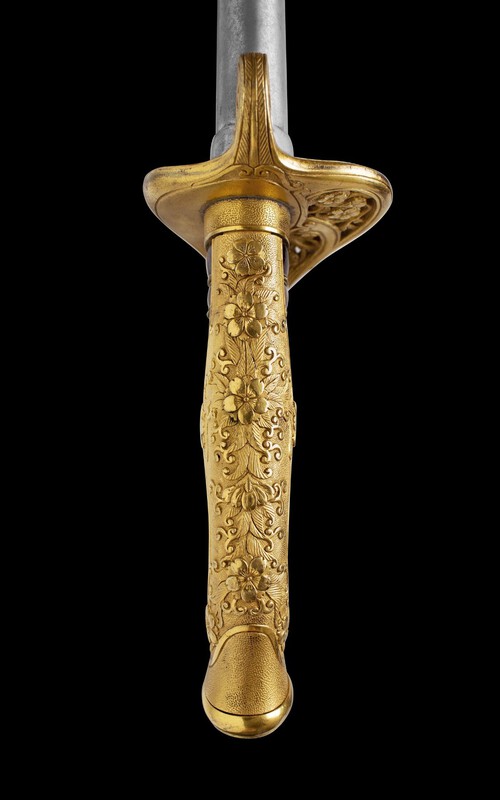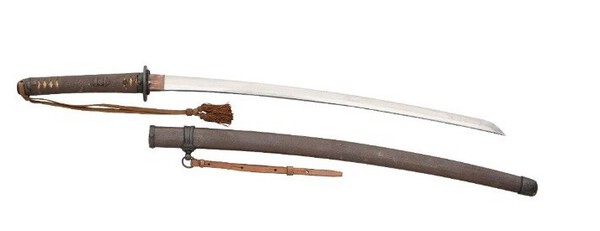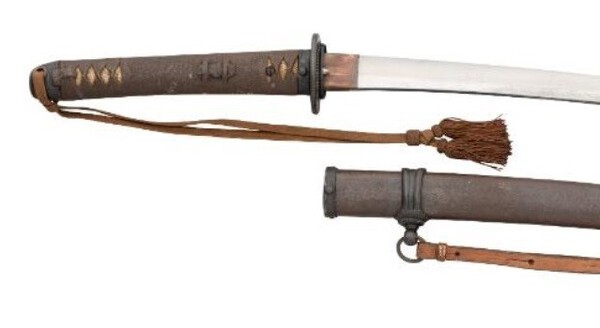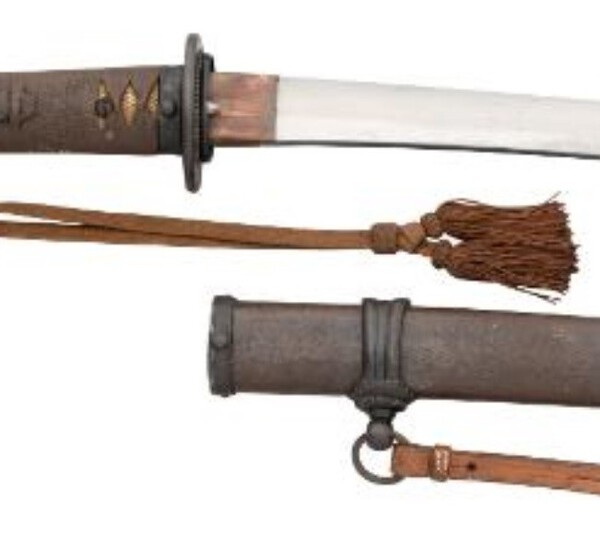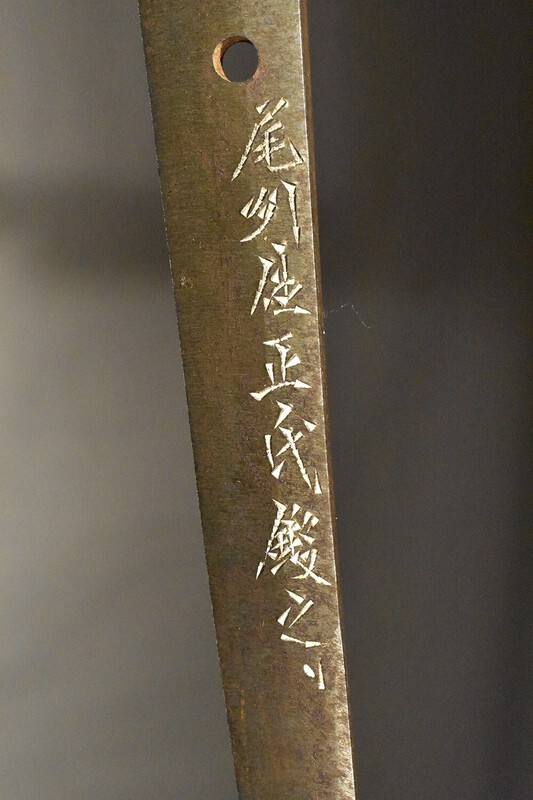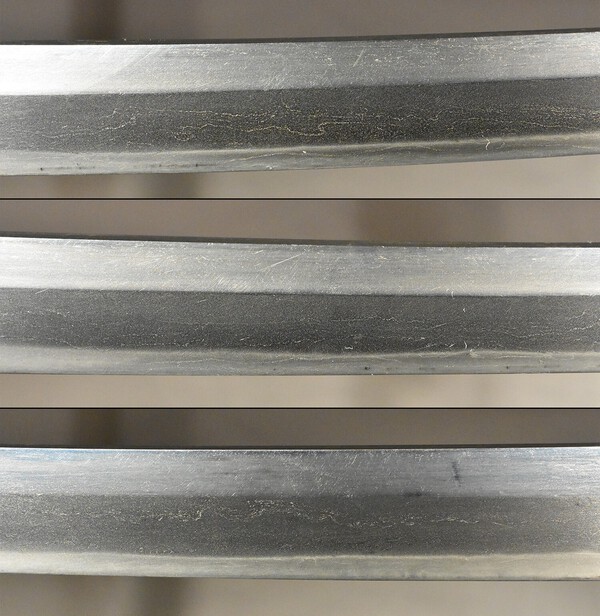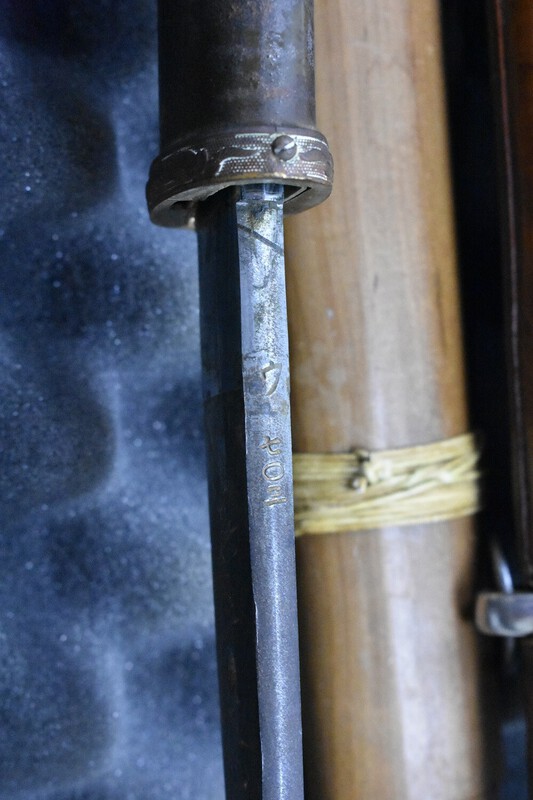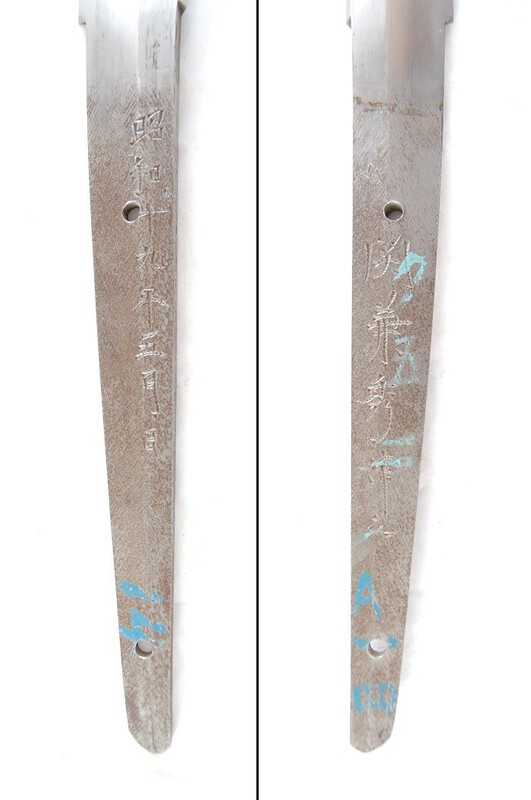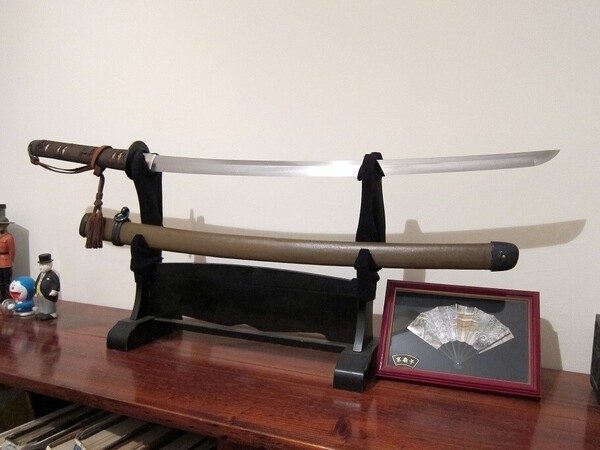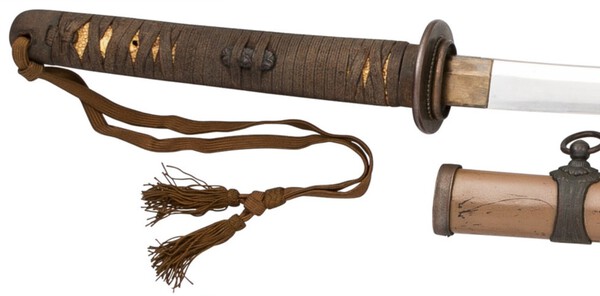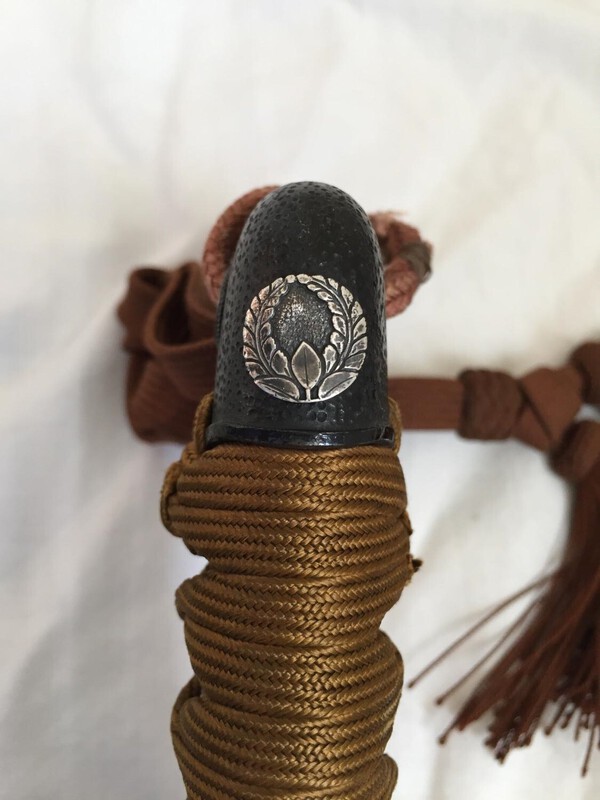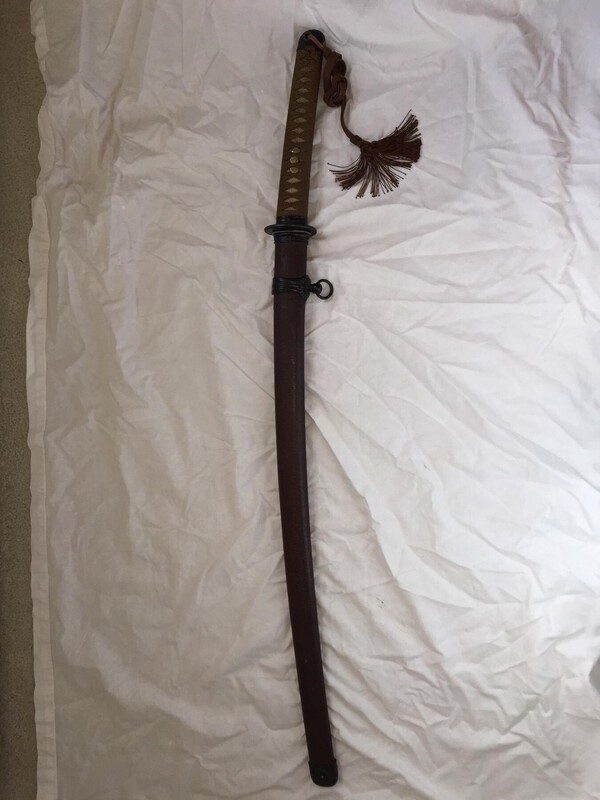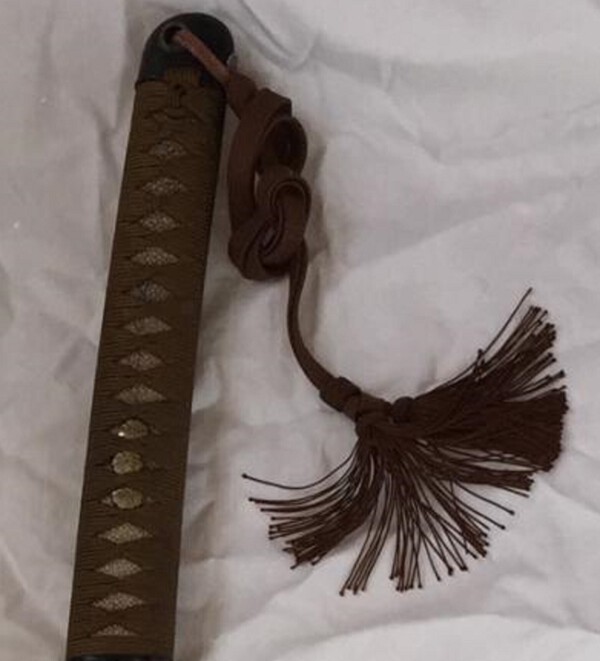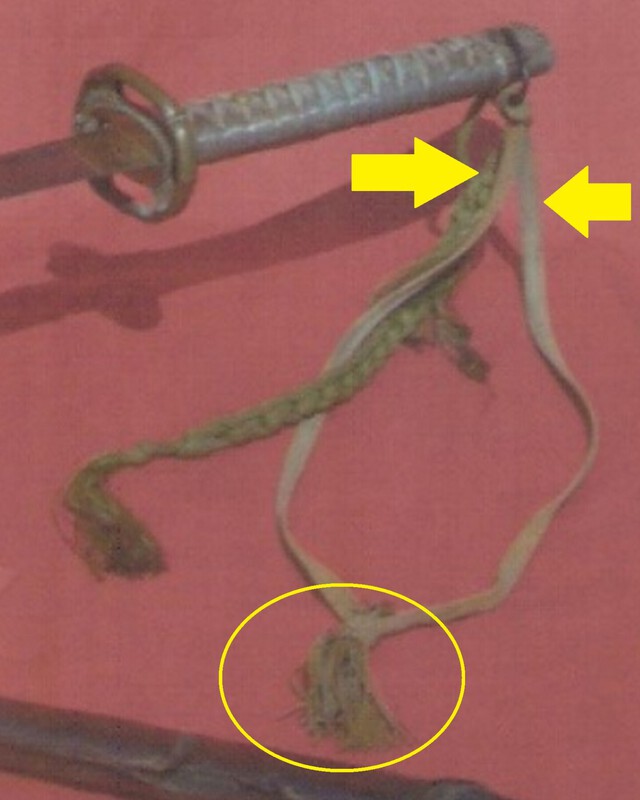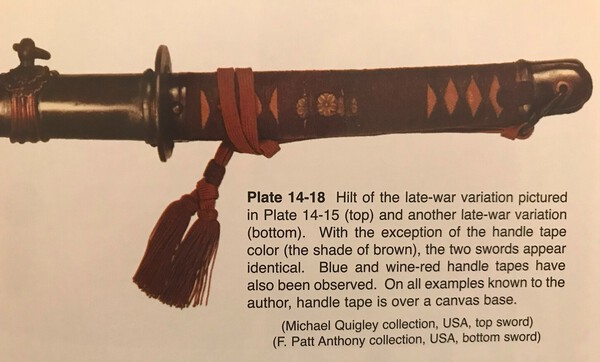
mdiddy
Dealers-
Posts
642 -
Joined
-
Last visited
-
Days Won
1
Content Type
Profiles
Forums
Events
Store
Downloads
Gallery
Everything posted by mdiddy
-
Military Sword with Shark skin Saya ?
mdiddy replied to Dogditcher's topic in Military Swords of Japan
The 2nd mekugi-ana suggests the blade was re-mounted which is a bit of a rare thing for showato. Also, the blade is a bit - respectfully speaking - 'pedestrian' for this type of koshirae. Along with what looks like a crisp colonel's tassel, it might be worth kicking the tires to make sure everything checks out, e.g. nakago is not loose in the tsuka, habaki fits evenly in the saya, fuchi and koiguchi match, etc, etc. Also, maybe it's just the angle, but the chisel strokes for the soemei look different from the rest of the mei. Probably it's just the way it was, but worth a little extra due diligence since the koshirae elevate the blade and not the other way around. Just sayin. -
@george trotter @Bruce Pennington Apologies for the late reply on this one, I had the photos last week and just catching up on getting them shared. The number on this one is 135, hope it helps.
-
@Bruce Pennington Thanks for highlighting mine, here are a few more photos and a link to more info about the sword. Cheers!
-
Here is one from my collection, the blade by Suishinshi Masahide with an artistic horimono by Honjo Yoshitane. This type horimono was highlighted by Fujishiro and in other references. I also threw in the horimono on the other side of the blade as a bonus, even though it is not a dragon.
- 51 replies
-
- 16
-

-

-

-
Nice pick-up! A Mikasa-to by Horii Hideaki will usually brighten up a day. Please share pics of the blade and mounts. Here is the mei and nengo as I see it: Mei: 以軍艦三笠砲鋼秀明 (made with Battleship Mikasa cannon steel, Hideaki) Nengo: 昭和五年五月日 (a day in May 1930)
-
NEW(ISH) WEBSITE: OWAZAMONO.COM RE-LAUNCHED!!!!
mdiddy replied to mdiddy's topic in Auctions and Online Sales or Sellers
@Soshin Thanks Dave, I greatly appreciate it! Likewise I added a link to Tsuba Otaku on our links page. -
Here is one that I have to offer to the thread. The button is on the back, at the top of the backstrap, almost blends in with the other decorative sakura.
-
Hello Collectors! I am very excited to announce to the nihonto collecting community that myself and Eric Molinier have just recently relaunched the site www.owazamono.com!! We are starting with a nice selection of fine swords and tsuba culled from our personal collections. There is a little something for everyone. We hope you will drop in and take a look around the site and let us know what you think. Feel free to message us through the site or PM me, especially if you see something that might fit well in your own collection. Cheers, Matt www.owazamono.com
- 7 replies
-
- 14
-

-

-

-
@intenex Welcome to the forum Ben and also welcome to the world of nihonto. As I think most on the forum will agree, nihonto are a very fulfilling area of study as well as hobby to collect and trade these swords and related items. I agree with @PNSSHOGUN that gaining knowledge will help as you study more swords and assess future purchases. You now have some swords in hand (thank you very much for your purchase from me) and they are more than enough to gain traction in exploring the details of swords that discern quality and relate to value. Your swords will partner well with a few very inexpensive books by comparison that provide a really good foundation on assessing Japanese swords. I recommend these books, a couple which are available on amazon (check the links), and quite cheap compared to the cost of a sword: 1. The Samurai Sword by John Yumoto: the classic entry book and a very quick read 2. The Connoisseur's Book of Japanese Swords by Kokan Nagayama: one of the few comprehensive books on the subject in English, this is more or less the textbook for Nihonto 101/201 3. Facts and Fundamentals of Japanese Swords by Nobuo Nakahara: another rare English volume on the topic, this one includes some insights on pitfalls to avoid; sadly, looks like it is out of print (wow, when did that happen), but if you shop around you can probably find a copy. I recommend checking with @Grey Doffin to see if he might can help locate a copy for you; the link provided goes to his website. Yes, a papered and polished blade will afford you an opportunity to have a Japanese sword in a state of preservation that lets you more readily appreciate all the features of these swords that set them apart. However, it is not something you have to rush into. There are lots of swords available and you have the opportunity to take your time and fine one or two that closely align with your preferences and what you want to learn about next. Maybe you want to study old koto, or flashy shinto, or shortened pole arms, or sue-koto katateuchi for one-handed use, or... the list goes on. No hurry, there is more than enough to explore in this hobby, and we are all in a state of learning. For specific answers to the questions you asked of me, would you mind sending me an email to soheiswords@gmail.com? I can share more, but I am much faster at replying to emails than board posts. Happy to help if you are looking to learn more about these swords. On another topic - @PNSSHOGUN - I owe you an email reply going on two months late. That's on me. I have lots of ideas to share and will reply soon(er or later).
-
Breaking News On The All-Brown Army Gunto Tassel
mdiddy replied to Bruce Pennington's topic in Military Swords of Japan
-
Breaking News On The All-Brown Army Gunto Tassel
mdiddy replied to Bruce Pennington's topic in Military Swords of Japan
@george trotter Apologies for the delayed reply on this one. I tracked down the former owner and they could not quite remember where they got it and said most likely a gun show. I'm afraid the trail went cold. -
I once had a Nagamitsu that was done in Yamato-den with running masame hada and hataraki like uchinoke, nijuba, etc. I'll see if I can find pictures. Below are pics of a sword by Masauji that I had that featured a prominent type of masame hada that blended with itame hada, though the workmanship threaded the needle between Yamato-den and Soshu-den. Most of the time I have observed masame hada in a gendaito, the workmanship was an attempt at Soshu-den.
-
Attention Mantetsu Owners: A Survey
mdiddy replied to Bruce Pennington's topic in Military Swords of Japan
@Kiipu @Bruce Pennington Here is the mune marking. Yall got lucky this one was requested to hold and ship later. As an aside, it's better if you request this information from me earlier in the week that one is for sale and hit me up through my email or through eBay as those requests generally get worked sooner. -
Breaking News On The All-Brown Army Gunto Tassel
mdiddy replied to Bruce Pennington's topic in Military Swords of Japan
-
Breaking News On The All-Brown Army Gunto Tassel
mdiddy replied to Bruce Pennington's topic in Military Swords of Japan
Here's another I dug up that I previously had. I also found a 1940 dated Kanehide in my archive that does not have any arsenal paint. Here's another from Alf's site with the blue paint: https://japaneseswor...o-by-nakata-kanehide Here's another from Ed's site with the blue paint: https://yakiba.com/kanehide-nakata/ There's more out there with same arsenal paint if you google around, like here: https://www.warrelic...2-collection-437275/ -
Breaking News On The All-Brown Army Gunto Tassel
mdiddy replied to Bruce Pennington's topic in Military Swords of Japan
Looks to me like it turned out GREAT! Really cool that you were able to achieve it using original ito, which is no small task. Kudos on rebuilding it. I got that sword from another collector who I believe purchased it from a motel buy. I'll inquire if they recall any extra information on it. It was interesting that yours was in the late war mount with gray saya. Most of the other Kanehide I have seen were in Type 98 koshirae (I had a 1940 dated Kanehide once) or mounted in the late war mount with black saya and lacquered tsuka-ito. -
Breaking News On The All-Brown Army Gunto Tassel
mdiddy replied to Bruce Pennington's topic in Military Swords of Japan
Any chance this Kanehide was missing the tsuka-ito originally? It has been a long time, but I recall selling you a Nakata Kanehide a long while ago (ca. 2012?) that was missing the tsuka-ito. It was a really nice blade, star-stamped, big gunome hamon from what I recall. Here is a picture that I had from way back. -
Breaking News On The All-Brown Army Gunto Tassel
mdiddy replied to Bruce Pennington's topic in Military Swords of Japan
-
Breaking News On The All-Brown Army Gunto Tassel
mdiddy replied to Bruce Pennington's topic in Military Swords of Japan
-
Breaking News On The All-Brown Army Gunto Tassel
mdiddy replied to Bruce Pennington's topic in Military Swords of Japan
-
I don't think they considered a lot of the swords in question as having a lot of cultural value. Basically, they were not putting ubu zaimei Rai Kunimitsu tachi in gunto mounts. Most of the ancestral blades in gunto mounts that I have run across have been overwhelmingly either Sue-Koto kazu-uchi mono, low to medium grade Shinto/Shinshinto, or mumei o-suriage koto that even if old are average or flawed in some way. To be clear, I'm not saying that very nice swords did not end up in gunto mounts, and that includes swords that maybe they did not think were nice at the time but now we think are very nice in art polish and have achieved Juyo token status, etc. To summarize, they had a need for weapons and they viewed most of these swords as weapons first and cultural value second. The more authentically described cultural value items were left alone.
-
Breaking News On The All-Brown Army Gunto Tassel
mdiddy replied to Bruce Pennington's topic in Military Swords of Japan
I agree - this one is more conclusively not an all brown tassel. We can see both sides of the cord and while faded they are different colors. Also we can see the different shades of tassels, faded blue vs. brown. -
Breaking News On The All-Brown Army Gunto Tassel
mdiddy replied to Bruce Pennington's topic in Military Swords of Japan


